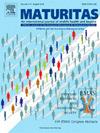Age-related increase and sex difference in the prevalence of handgrip strength asymmetry among Chinese middle-aged and older adults
IF 3.6
2区 医学
Q2 GERIATRICS & GERONTOLOGY
引用次数: 0
Abstract
Introduction
In addition to weakness, asymmetry is increasingly recognized as an abnormal condition of handgrip strength (HGS), one which is associated with various adverse health outcomes in older adults. However, the influence of age and sex on the prevalence of HGS asymmetry remains unclear.
Methods
The study population included adults aged 45 to 85 years from two waves of the China Health and Retirement Longitudinal Study (CHARLS), categorized by 5-year age groups. HGS ratio was calculated by dividing the maximal HGS (stronger HGS) by the highest HGS value obtained from the opposite hand (weaker HGS). HGS asymmetry was defined as an HGS ratio > 1.1, 1.2 or 1.3. Univariate and multivariate analyses were used to explore the associations of age and sex with HGS asymmetry.
Results
The prevalence of HGS asymmetry among Chinese middle-aged and older people, defined by an HGS ratio > 1.1, 1.2, and 1.3, was 42.7 %, 15.6 %, and 6.4 %, respectively. Regardless of the diagnostic threshold, the prevalence of HGS asymmetry increased with age (all, p value for trend <0.0001), starting primarily from 60 to 64 years. The risk of HGS asymmetry was significantly higher in women than in men, though this sex difference diminished after age 70. The age-related increase and sex difference in the risk of HGS asymmetry remained significant even after adjusting for multiple covariates.
Conclusion
The prevalence of HGS asymmetry increases with age and is higher in women. HGS asymmetry may serve as an additional marker of muscle function decline and should be routinely evaluated in assessing sarcopenia and frailty, particularly among women and the oldest-old.
中国中老年人握力不对称患病率的年龄相关性增加和性别差异
除了虚弱之外,不对称越来越被认为是握力(HGS)的一种异常情况,它与老年人的各种不良健康结果有关。然而,年龄和性别对HGS不对称患病率的影响尚不清楚。方法研究对象为中国健康与退休纵向研究(CHARLS)两期45 ~ 85岁的老年人,按5岁年龄组分类。HGS比值由最大HGS值(较强HGS值)除以另一只手获得的最高HGS值(较弱HGS值)计算。HGS不对称定义为HGS比>;1.1 1.2或1.3。采用单因素和多因素分析探讨年龄和性别与HGS不对称的关系。结果中国中老年人群中HGS不对称的发生率(以HGS比值定义);1.1、1.2、1.3分别为42.7%、15.6%、6.4%。无论诊断阈值如何,HGS不对称的患病率随着年龄的增长而增加(趋势p值均为0.0001),主要从60岁到64岁开始。HGS不对称的风险在女性中明显高于男性,尽管这种性别差异在70岁后逐渐减少。即使在调整了多个协变量后,HGS不对称风险的年龄相关增加和性别差异仍然显著。结论HGS不对称的发生率随年龄增长而增加,以女性居多。HGS不对称可以作为肌肉功能下降的另一个标志,在评估肌肉减少症和虚弱时应该进行常规评估,特别是在女性和老年人中。
本文章由计算机程序翻译,如有差异,请以英文原文为准。
求助全文
约1分钟内获得全文
求助全文
来源期刊

Maturitas
医学-妇产科学
CiteScore
9.10
自引率
2.00%
发文量
142
审稿时长
40 days
期刊介绍:
Maturitas is an international multidisciplinary peer reviewed scientific journal of midlife health and beyond publishing original research, reviews, consensus statements and guidelines, and mini-reviews. The journal provides a forum for all aspects of postreproductive health in both genders ranging from basic science to health and social care.
Topic areas include:• Aging• Alternative and Complementary medicines• Arthritis and Bone Health• Cancer• Cardiovascular Health• Cognitive and Physical Functioning• Epidemiology, health and social care• Gynecology/ Reproductive Endocrinology• Nutrition/ Obesity Diabetes/ Metabolic Syndrome• Menopause, Ovarian Aging• Mental Health• Pharmacology• Sexuality• Quality of Life
 求助内容:
求助内容: 应助结果提醒方式:
应助结果提醒方式:


